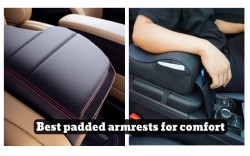Difference between Crizal Avance vs Sapphire
Driving is a task that is done with care, and having your sight in check is important to ensure maximum road safety. Some of the best lenses for eyeglasses are available to ensure that you see people and objects moving directly in front of you.
When purchasing lenses, you are faced with the decision to choose between Crizal Avance and sapphire, some of the best lenses in the market. This article shows the difference between Crizal Avance vs sapphire, their pros, and cons, as well as which of them is best for you.
Crizal Avance
Crizal Avance provides lenses with a high E-SPF of 35. This high number offers maximum protection against UV rays, and the higher the number, the more protection it offers. The production of this lens follows 9 processes for glare prevention, these processes apply to the front and back of the lenses.
Front of the lens
- Patented pad control system
- High surface density (HSD)
- Anti-particulate layer
- Anti-reflective layer
- SR booster layer
- The two-sided scratch resistance layer
Back of the lens
- Anti-reflective layers with UV reflection protection

Hydrophobic and oleophobic coating
The patented and high surface density process is a technique that increases the hydrophobic and oleophobic molecules on the surface of the lens while also maintaining the anti-smudge property. The hydrophobic molecule is helpful for water adherence and it ensures that drops of water roll off the lens without leaving behind any trace. The oleophobic or oil-repellent coating protects the lens, improves smoothness, and prevents fingerprints from being visible on the lens.
Scratch resistant
If you’ve used lenses for a long time, then you know that they went from being fragile and easily affected by impact to being very durable in years. One feature that makes lenses last long is their ability to not get scratched easily and Crizal Avance lenses have been toughened up with coatings that make them stronger and scratch resistant.
The first layer of scratch-resistant coating called the matrix is applied first, followed by a thicker coat that contains 50% more silica. This last and hard coat makes it difficult for your lenses to attain any scratch.
Anti-glare
Glare is caused when light is reflected off the surface of your lens or a plane surface. Crizal Avance lenses have a low amount of reflection when compared to lenses with no anti-glare coatings, which allows most of the light to pass through them.
Crizal Avance lenses prevent glare by using the anti-reflective (AR) technique. Before the AR coating is applied, the glass is fired with high-energy particles using an ion beam, this is to clean and prepare the surface for the application of the AR coat.
Anti-reflective surfaces work by using coating on lenses that permit more light to pass through. When more light passes through the lens, less light is reflected off the surface, hence, there is less glare.
The UV protection cover at the backside of the lens has a coating that helps in absorbing and preventing UV transmission which can cause a backside glare.
Benefits of Crizal Avance
Crizal avance have proven itself to be superior as it is great for reducing glare and improving vision, durable, great for filtering blue light which makes it easy to see during day and night, and it offers more eye protection in contrast to a regular lens.
However, they are expensive and not readily available.
Crizal Sapphire
Crizal sapphire lenses are made with high-indexed matched coatings capable of providing maximum protection against various factors. With various features like a stronger AR coating and lower reflection rate, chemical resistance, and oil and water-repellent surfaces, the sapphire coating is another option you should consider for your lenses.
Crizal sapphire is sometimes considered the upgrade of the Crizal Avance lens.

Hydrophobic, oleophobic, and hydrophilic coatings
The hydrophobic, oleophobic, and hydrophilic coatings make it possible to easily solve problems regarding liquids on the surface of the lens. It makes the surface of your lens easier to clean and gives it a better adhesive property which enables liquid to roll off when it comes in contact with the surface of your lens.
It also helps the lens surface to be lubricious enough and prevents any surface contamination such as the marks of fingerprints.
Index-matched AR coating
By using a material with a similar index of refraction as the lenses, the surface reflection is reduced to a minimum when light passes through. This feature reduces the amount of glare produced. Index-matched AR coating is gradually becoming a global standard in manufacturing lenses as they provide other benefits as well.
Chemical resistant
Because of the tough coatings used to manufacture sapphire lenses, it has become resistant to irritant chemicals that may cause damage to its surface. This feature makes this lens scratch-resistant and also lasts longer than regular ones.
Benefits of Crizal Sapphire lenses
As another great vision enhancer, the sapphire lenses are great because they are easy to clean, durable, chemical resistant, and anti-glare and optically effective. However, just like their counterparts, they are also expensive.
Difference between Crizal Avance vs sapphire
Both Crizal Avance and sapphire are very quality lenses that are designed to last for a long time and make maintenance easier for their users, however, they have some minor differences and one is better than the other.
The prominent difference between Crizal Avance vs sapphire is that they have different reflex colors, Crizal Avance's reflex color ranges from yellow to green while sapphire's reflex colors range from blue to violet.
Another difference is that Sapphire lenses are made with a high index matching AR coating which makes it have a lower reflection rate of 0.5% as compared to Crizal Avance which has a reflection rate of 2%. Sapphire also has a stronger anti-glare property than Crizal Avance lenses and based on these points, it is clear that Sapphire is an ideal option, but Crizal Avance is just as good.
The benefits of high-quality lenses
High-quality lenses are beneficial to your overall vision, especially when driving during the day and night time. The reason why glares are bad for nighttime driving is that in the absence of bright light, it becomes difficult to differentiate objects from each other which is bad for safety.
AR or anti-glare lenses are known to improve contrast sharpness by 20% and provide up to 30% wider field vision for safety while driving. Quality lenses also improve your contrast sensitivity and acuity which covers your ability to clearly distinguish objects in various backgrounds under low light, and your clarity of letters.
Conclusion
Shopping for quality lenses for driving may seem like an easy task but in reality, it is more difficult than it seems. This may especially be the case when you have to choose between two types Crizal Avance and Crizal Sapphire.
Fortunately, this article has provided every information you need to know about the difference between Crizal Avance vs Sapphire and which type is better. This helps you choose your ideal lens with ease. We also explore the pros and cons of each type to provide more insight as well as the benefits of these lenses for nighttime driving.




